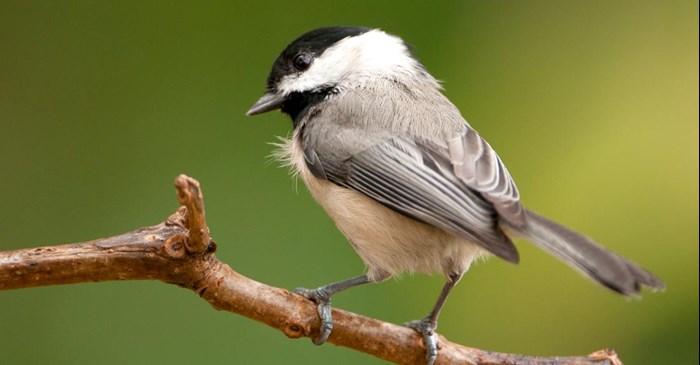While the Carolina Chickadee looks almost identical to the Black-capped Chickadee, the two are separate species that most likely diverged more than 2.5 million years ago. The Carolina Chickadee, named by John James Audubon on a visit to South Carolina, is found primarily in the Southeast quadrant of the United States, while the Black-capped Chickadee’s territory expands across the Northern portion of the country.
The Carolina Chickadee often whistles a four-note “fee-bee, fee-bay” song, that is longer than other chickadee species, and its “chicka-dee-dee” call is faster and higher pitched than that of the Black-capped. However, scientists have discovered a narrow area from New Jersey to Kansas known as the “hybrid zone” where the Carolina and Black-capped Chickadees come in contact. Here the two species imitate each other’s songs and are known to interbreed. The resulting hybrids can sing the song of either species, and even come up with their own variations.
And while hybrid chickadees may be good at remixing their parents songs, don’t expect them to become a designated species of their own anytime soon. Hybrid chickadee eggs are less likely to hatch and one recent study revealed that the hybrid offspring have weaker memories than their parents. Neither chickadee species migrate, and rely on storing food to survive the winter. The ability to locate these caches makes memory a crucial tool for survival.
Year round, Carolina Chickadees are frequent visitors to bird feeders. If they come to your yard, you'll notice that Carolina Chickadees “take turns.” After grabbing a single seed or nut, they fly it to a nearby tree or bush, where they’ll hold it down with one foot and hammer an opening in the shell.
If you want to see more of these lively birds in your yard, consider setting up a nesting box designed for chickadees and offer plenty to eat. The black oil and black striped sunflower seeds, shelled peanuts and other protein-rich nuggets found in Lyric Chickadee Premium Sunflower and Nut Mix will keep these busy birds coming.
